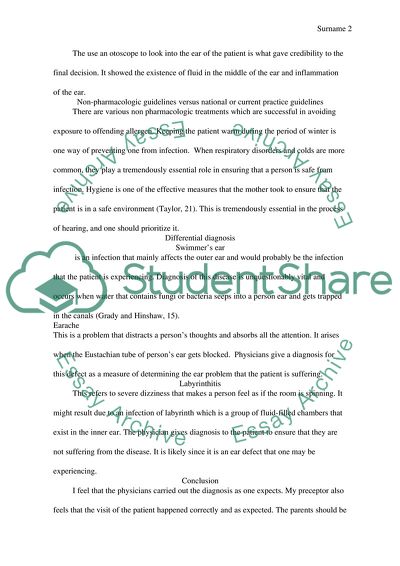Pediatrics Reflection Assignment x3 Example | Topics and Well Written Essays - 500 words. https://studentshare.org/medical-science/1778223-a-pediatric-patient-with-otitis-media
Pediatrics Reflection Assignment X3 Example | Topics and Well Written Essays - 500 Words. https://studentshare.org/medical-science/1778223-a-pediatric-patient-with-otitis-media.


